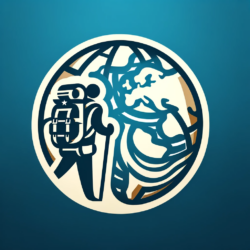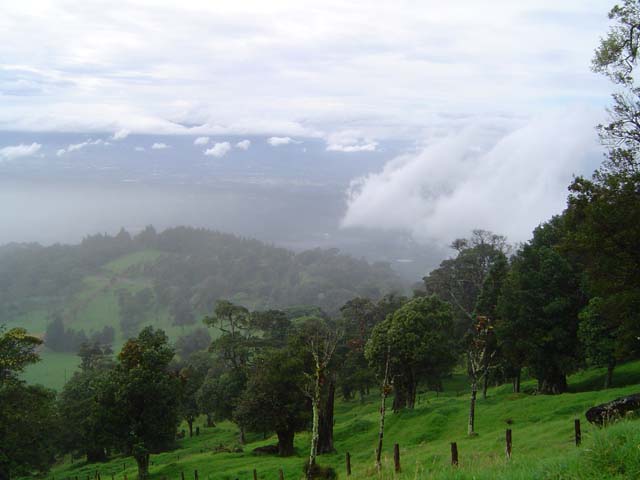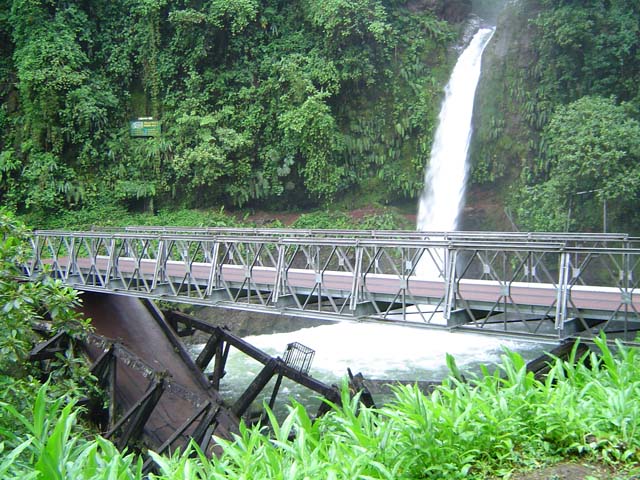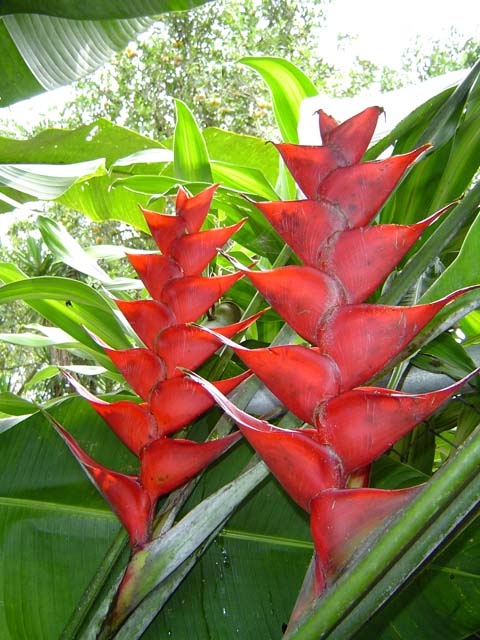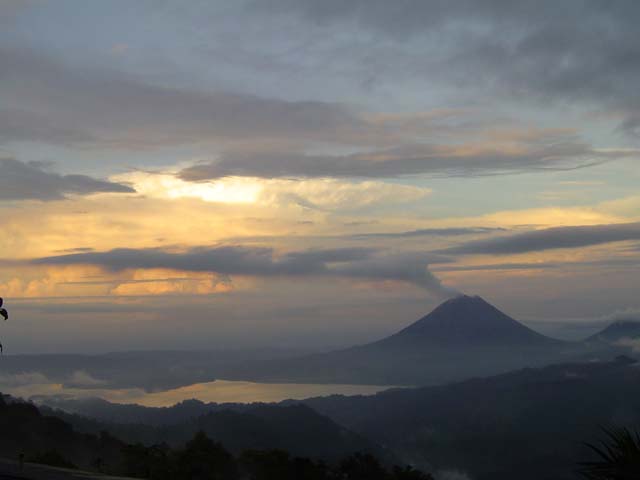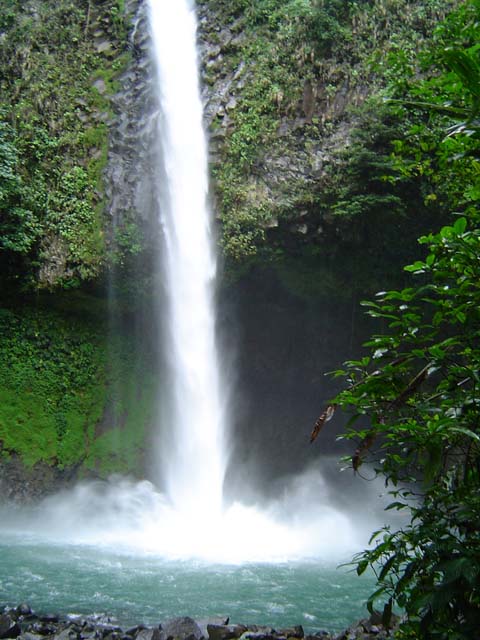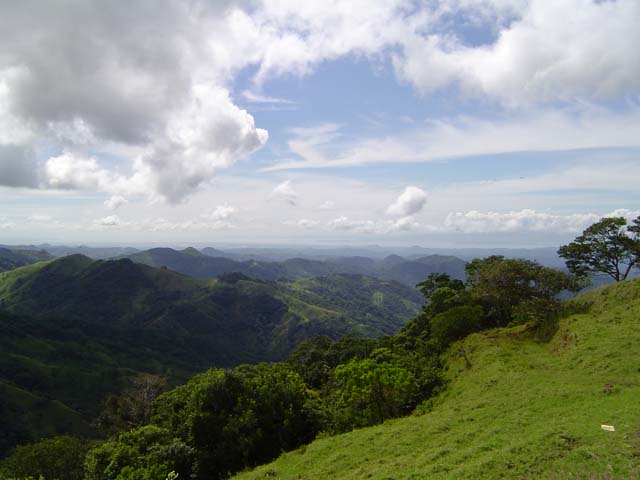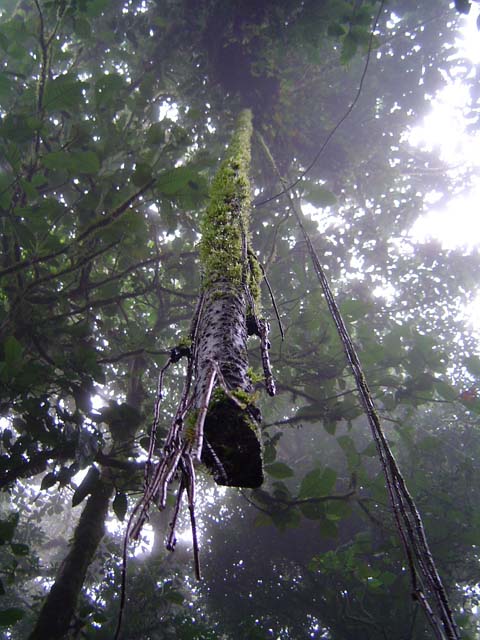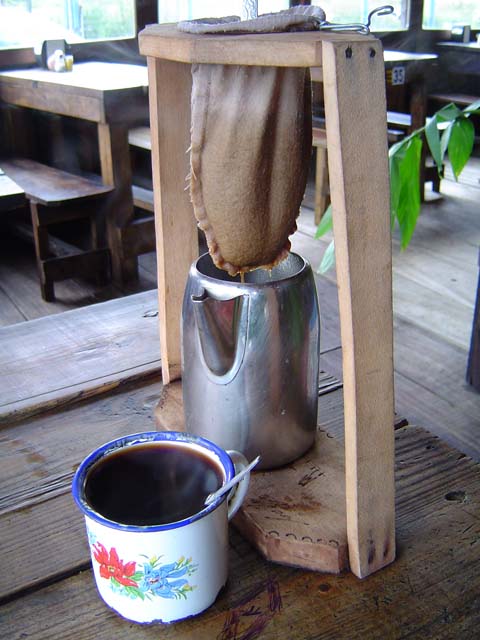Austria to Costa Rica via Miami
One of my major „life-goals“ was to visit six continents before I turn 25 , which in my case meant 13th of December 2003. Till 2002 I had traveled four continents, so there where still two left. I visited South Africa in May/June 2003, but I wasn’t sure if I would make it to South America the same year, but things worked out for me, and after heavy searching on the Internet, my original task was Brazil or Chile, I got a very cheap flight to Costa Rica only a week prior to my targeted departure. So I once again packed my backpack and left good old Europe, with a stop-over in Madrid and Miami. Fortunately my flight from Miami to San Jose was cancelled and I got a free night at a Crown Plaza in Miami, which was much better then arriving in San Jose at 2 am in the morning, without pre-arranged accommodation. I’m getting more and more un-organized.
Costa Rica Backpacker, San Jose
My original airline was Iberia, but due to the changes in Miami, I had to board an American Airline plane in Miami. There I got to meet Craig, a guy from Florida, who was planning to rent a car and invited me to team up. We had kind of the same plans, which meant no plans at all. So not having to spend a lot of my valuable time on the bus and instead travel and explore the country more independently I agreed immediately.
We picked up the car and headed towards to the city. Our first stop was „Costa Rica Backpackers“ but it did take some time till got there. Street signs are rare in San José and streets can change from normal street to one-way within one intersection.
The „Costa Rica Backpackers“ was a very comfortable place and provided free internet access, a swimming pool and a large TV screen with international channels etc.
San Jose to La Fortuna
On our first official day we planed to climb up Volcano Poas, but due to the clouds there we decided to skip it and go straight to La Fortuna, a village north of San Jose. The streets in Costa Rica, even the main roads are in very bad conditions and when we where on the road to La Fortuna people started to wave at us. When we stopped and asked what was going on we where told that the street was washed away and that we had to use another way.
On the way back we found a little dirty street sign that said „Canopy Tour and horseback-riding“. We drove down the unpaved road and stopped at a little restaurant for lunch. It turned out that the restaurant owners where also running the canopy tour. So our first adventure was already underway! The Canopy tour was very funny, it did not look very save at all, but after all, its „No risk no fun!
For those who don’t know „Canopy“, platforms up in the trees are connected by steel ropes, you then slide from one platform to the other, its very fast, so you don’t really get to see the wildlife, its more a adrenalin-kick then exploring.
After the Canopy we went horseback-riding for about an hour or so. In the beginning my horse didn’t like me at all, and stopped on several occasions, but we made a pretty good team in the end.
After we finished the tour we went all the way to La Fortuna. We kept looking for the Volcano, but the picture in the Lonely Planet was older and the Vulcano had changed its shape and height over the past years so we didn’t figure out where it was until we reached La Fortuna. We stayed at a Bed and Breakfast, which offered an excellent view of the Volcano. The owner also offered us tours that we could book there, and we opted for the visit of „Vernado“ caves in the morning and a hike around the volcano in the afternoon, combined with a visit of the hot springs.
Vernado Caves, La Fortuna
Despite a breathtaking view of the volcano the previous day and even more interesting, lava eruptions at night, the fierily mountain was in clouds when we started our tour to the Vernado caves. It took us about an hour in a small bus on a bumpy road to reach the caves and start exploring. The owner of the hostel joined us, after we convinced him that he should try the stuff he was promoting.
It was a very small group of just four people and the tour guide, which was good as we could explore more remote parts of the cave. The tour was basically three hours of crawling and sometimes swimming in pitch black muddy water. I got scratches all over feet, but it was well worth it. The caves, dating back over 7 million years, are the direct result of water currents penetrating and passing through the surrounding limestone rocks.
The structure of the tunnels varies tremendously with some displaying ceilings of nearly 20 feet in height, while others requiring that you slide through like a serpent. Within the caves we could find five thousand year old rock formations, such as the „papaya“ which is a vertical formation formed by the union of two different rock types; the name is derived from it’s shape, which you guessed it, looks just like a papaya.
Another interesting formation was the „coral“, a huge white masterpiece of time and mother earth. Throughout the caves water in continually flows along the floor of the caves, at times a few feet high. The caves contain four different species of bats and numerous types of spiders, many of which are endemic to the area.
In the afternoon we joined a hiking group to explore the area around Mount Arenal. Unfortunately I don’t have a huge knowledge of plants and animals, so I let the pictures speak for themselves. But we saw all kinds of plants, birds and monkeys that call the rainforest home. We ended the day with dinner and a soak at the Tabacon Hot Springs Resort, and we got the unique opportunity to see the red glow of the volcano’s molten lava from the relaxing thermal waters.
Fun at the Nicaraguan Border…
I’m a huge fan of waterfalls, and there was no chance I was going to miss the La Fortuna Waterfall, a huge waterfall about 5 kilometers away from La Fortuna.
The rest of the day was driving on bumpy roads, as we tried to reach the Nicaraguan Border. We passed through an unspoiled landscape sometimes interrupted by small villages and fruit plantages. It took us about six hours to get from La Fortuna the to the Panamericana, the main „highway“ that runs trough the entire country and on to panama. But calling it a highway is a bit misleading compared to western standards, as this road contains potholes up to the size of a small car – no kidding.
The Nicaraguan border was one of the „highlights“ of the day. It turned out that crossing the border and getting the passport stamped wasn’t that easy at all. We „left“ Costa Rica and approached a building which we thought was the Immigration office for Nicaragua. As soon as we left the car we where surrounded by people. One guy was holding Nicaraguan Money right into my face and said „You need changing money, Costa Rica money and Dollar no good in Nicaragua!“. Another guy was a bit more fluent in English and we asked where we could get our passport stamped. He showed us the way to an office, which already had a very long line of people waiting for their passports to be stamped. Craig asked if we could bribe (bestechen for the Germans) someone, so we could get „on the fast lane“. The guy walked away, talked to some people returned with a police officer. Six other people also showed up and it seemed like they where all working together as they where whispering to each other and with the police officer in Spanish. Yep – these are the moments you wish to understand that stupid language..
The police-officer looked at us and took us into the immigration office. Craig tried to give him some money, but he declined. He gave a sign to the immigration officer and told us to walk up to a desk. The immigration officer seemed quite pissed and it was a bit awkward to surpass all the people who where already waiting. But we got a stamp into our passport! Unfortunately it turned out that it wasn’t the one we needed to get to Nicaragua. Instead those people had talked us into immigration into Costa Rica again. The police officer walked away, but the group of six people stayed with us.
If you think that it would have been the right time to start running, we felt the same way! But we where told that we had get the Nicaraguan stamp too so we could re-enter Costa Rica. Fist they wanted both of us to come with them and let the police-officer, who had „helped us“ with the immigration office to watch our rental car, but we declined that, deeming it too risky to get the car stolen or something. So I stayed with the car and Craig started walking towards the border with some of the guys. One of them stayed with me at the car. But Craig returned soon and said that he would need more money, about 30 Dollars to get the stamp. As it did start do sound more and more complicated, we simply decided to try and leave this weird place. Luckily we could easily re-enter Costa Rican soil and we left the place as fast as we could. We drove about 80 kilometers south to a city called Liberia and stayed in a small hotel. Later I found out that it would have been much easier to enter Nicaragua and the cost would have been somewhere around five dollars.
Tamarindo to Monteverde
We left Liberia early in the morning and drove towards the Pacific coast, where we made a short halt at Tamarindo, a typical surfer-spot. It had a very western feeling and most of the buildings where either shops or hotels, which was a bit disappointing. Instead of a day on the beach wie opted to explore the Nicoya Peninsula, famous for its wildlife, but those plans where also scrapped when we discovered that there was a newly constructed bridge that would allow us a much faster passage to Monteverde.
The roads towards Monteverde are all unpaved. The locals disapprove any improvements on the street, as this would bring in more tourists into the area. We had a view „picture stops and arrived at the little town of Sta. Elena, the starting point to all attractions of the region around lunchtime.
The town of Sta. Elena has been founded by Quaker families(some sort of religious group) immigrating to Costa Rica from the United States in 1951. They came to Costa Rica because, beside other considerations, the fact that the country does not have a standing army. Surprise! US-citizens that don’t like the idea of having an army, I bet those guys weren’t supporting the Republicans.
But even Quakers, somehow have to maker their living, so there is a dairy farm and associated cheese factory which now produce over a ton of cheese a day. And you get to see a lot of cows running around, which is bad for the environment, as cows like grass and don’t usually life in the rainforest.
Our first stop was at the Skywalk, we initially just wanted to visit the „Selvatura“ Trek, which was recommended to us by a fellow traveler in La Fortuna. But after the guy at Skywalk offered us half-price (it’s always good to mention the competitor) we decided to do both of the treks. The Skywalk is a complex of suspended bridges, platforms and paths, built within the Cloud Forest. These allow the observation of flora and fauna from ground level all the way up to the top of the trees. That enabled us to explore the tops of the trees, a world which is very close but yet unknown to most. The lush green garden of mosses, ferns, flowers, and epiphytes growing thickly on every tree was very impressive. At the end of the door we even got to see some hummingbirds.
On our way back to Sta. Elena we stopped at a marvelous spot to listen the sound of birds and watch the fog rising from the rainforest. First we thought about camping, but due to the wet weather conditions we decided to have a look at an Inn which was promoted on a dirty little sign on the side of the road. On the way to the inn we had the chance to catch an amazing sunset with superb view of Vulcan Arenal. The Inn was indeed very remote. The water was supplied by their very own spring and the electricity was provided by an generator.
The guy who was in charge was very friendly and we met Chety, a tour guide and Abel, a biology student who was working on his final papers. Both where also staying at the Inn. Chety was from Los Angeles and running a small agency in Costa Rica, he offered us an unique canyoning tour the next day. We got it half price, as he was still training his stuff and we where the first tourists to try their equipment. The hut we stayed in where basic, but the view was amazing. It was even possible to watch the eruptions of Mount Arenal at night.
The Rainforest of Monteverde
The best time to explore the Rainforest is in the morning, before the crowds start moving in, and we were lucky to be the first people at Selvatura. The rainforest was much more interesting then at the Skytrek area and the vegetation was even richer and more colorful. The mist and the clouds where creating an amazing and mystical atmosphere. Attached to the Selvatura complex is Central America´s largest butterfly garden, a giant dome, which hosts a magnificent collection of butterflies from over 50 different species found throughout the tropics. I had my own privat tour around the butterfly garden as Craig was taking more time to explore the walkway.
In the afternoon it was time for the cannyoning, which literally means „walking down waterfalls“. I wasn’t experienced in that kind of sport at all, but it was great fun from the very first minute. In the beginning I thought it would be scary to walk down a 35 meter high waterfall, attached to nothing more then a rope, but in the end I couldn’t get enough of it. I almost lost my glasses when I slipped on one of the waterfalls and got under the water stream, but my travel-mate Craig did an excellent job in finding them again. At the last waterfall, which is called the „Dragon Mouth, I slipped again, this time I bumped a rock, which was a very painful experience.
After the return to our Inn and a nice dinner Craig and I visited Selvatura again. It was already getting dark and started raining when we entered the walkway. We where the only people on the track and it was a very special experience. I couldn’t see much of the rainforest, sometimes I had no clue of where I was going or if I’m even on the track. The sound of raindrops, birds, monkeys, and all different kinds of animals was something I didn’t experience during the day and altogether created a completely different atmosphere then during the day.
Orchid Garden, Santa Elena
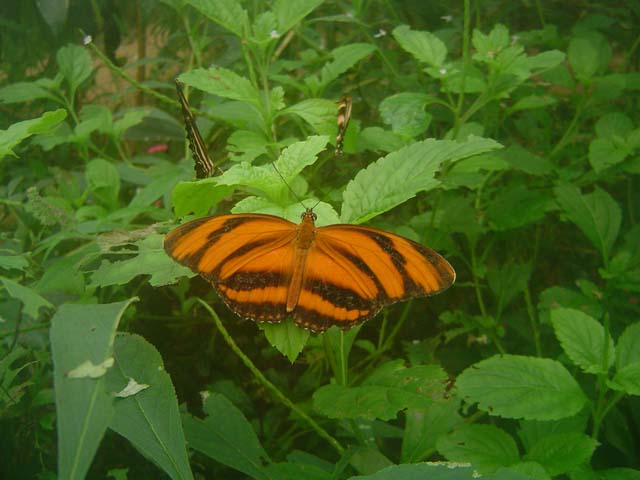
In the morning, we joined Abel on tour on a freshly cut out walking way through the jungle. Abel hopes to find some new plants or animals around Montverde someday and to name them. One of the hills we climbed up on the track was the continental water shad, the water going east ends up in the Caribbean sea, and the water on the West ends up in the Pacific. Just like the Bohemian Forrest in the area where I live.
After all the wild rainforest of the past days, it was time for a very special garden next to Santa Elena, the so called Orchid Garden. Like the name suggests, the garden is full of orchids, and contains more than 400 species including the national flower of Costa Rica, the „Guardia morada“ and also the smallest known orchid species in the world. Abel once again was our guide and gave us an excellent tour and explaind a lot of things as he used to work in the Orchid Garden. The owner of the garden is one of the most famous and respected orchid-experts in the world. He discovered many of new species but he has never been to an university and learned all the stuff by himself.
We spend the rest of the day in the car on the way back to San Jose. At night we checked into the San Jose Backpackers again. There I met Kathryn, a girl from England who had been working in a hospital in Belize and was now traveling around Central America before going back to the United Kingdom. Like I always say: When you are on your own, you are never alone! Especially in hostels its easy to get in touch with fellow travelers and team up for a little trip.
Back in San Jose
It was the last day for Craig, he was going back home to Florida, while I still had a few more days and decided to spend them at the beach in Manuel Antonio, a little costal town next to a marine national park about four hours by bus from San Jose.
Kathryn was also heading for Manual Antonio and we shared a cap to get to the bus-Station. The place was cramped with people waiting for their busses and doing business and it reminded me of Thailand.
Upon our arrival in Manuel Antonio it was very easy to find accommodation just by walking around and I enjoyed a wonderful sunset at the beach before I joined Katharine and a family from San Francisco for a night out in the bar. The family from San Francisco was fascination for me, the father was gay, the daughter a lesbian, traveling with her girlfriend and the son, well, let’s put it that way: I did not see much of Kathryn during the rest of my stay in Manuel Antonio.
